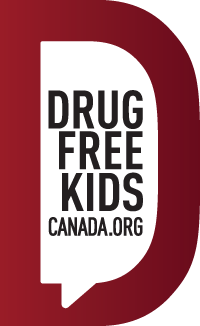Effects & Risks of Alcohol
Binge drinking, alcohol poisoning, driving while drunk, and early alcohol dependence in teens are concerns that we may face as parents.

The Canadian Centre on Substance Use and Addiction has released Canada’s Guidance for Alcohol and Health with new guidelines that replace Canada’s Low-Risk Alcohol Drinking Guidelines.
Use these new guidelines to start a conversation with your teen. It’s a good idea to have open conversations with your kids about the potential harms of drinking and the immediate dangers of over-consumption of alcohol.
Alcohol is a depressant that slows the functioning of the central nervous system, including the brain. Young people are at a higher risk for negative impacts from drinking alcohol because the executive functions in the teenage brain such as decision-making, motivation, emotion, reward, and risk-taking behaviors are not yet fully developed and will not be until their mid-twenties.
Young people are also vulnerable to alcohol-induced brain damage, which could contribute to poor performance at school or work.
When young people over-consume alcohol, they are at risk for accidental injury, alcohol poisoning, and motor vehicle crashes. While intoxicated, they may be more vulnerable to assaults, sexual coercion and mental health issues such as depression and self-harm, because alcohol impairs judgment, reasoning and the ability to evaluate risk.
Alcohol ResourcesFrequent or regular alcohol use has an impact on the physical health and mental well being of everyone, including youth. Long-term harms of excessive alcohol use include substance use disorders, learning and memory issues, problems with school performance, increased risk of school dropout, and increased risk for certain chronic diseases, such as liver disease, stroke, and cancer.
The way alcohol effects a person depends on many factors, including:1
- your age, sex and body weight
- how sensitive you are to alcohol
- the type and amount of food in your stomach
- how much and how often you drink
- how long you’ve been drinking
- the environment you’re in
- how you expect the alcohol to make you feel
- whether you’ve taken any other drugs (illegal, prescription, over-the-counter or herbal).

Short term effects and risks:
Acute or short term risks are the harmful effects of drinking too much alcohol in the short-term or on a single occasion (often referred to as binge drinking or heavy drinking).
If you drink too much alcohol on a single occasion, you may experience these short-term effects: 2
- impulsive behaviour
- impaired attention, concentration and judgement
- drowsiness
- aggressiveness and violent behaviour
- slowed reaction time
- slurred speech
- double or blurred vision
- flushed skin
- nausea and vomiting
- frequent urination
- impaired memory or loss of memory
Severe alcohol intoxication can lead to alcohol poisoning, which can result in:
- stupor (when someone is not alert or responsive, and has difficultly getting up or moving around)
- coma
- respiratory arrest (when someone stops breathing or has trouble breathing)
- death
Long term effects and risks:
Chronic or long term risks refer to the harms that happen over the long-term. If you frequently drink too much alcohol, you risk some of these long-term harms: 3
- damage to organs, including:
- liver
- brain
- heart
- stomach
- increased risk of cancer, including:
- liver
- breast
- throat
- stomach
- high blood pressure
- reduced resistance to infection
- sexual impotence
- decreased appetite
- malnourishment and vitamin deficiencies
- disturbed sleep patterns
- anxiety and depression, including suicidal depression
- hormonal irregularities and infertility
The Risks of Underage Drinking

Road crashes are the number one cause of death among young people in Canada.
Motor vehicle accidents are the leading cause of death among 16 to 25-year-olds, and alcohol and/or drug impairment is a factor in 55% of those crashes. (Madd Canada)
Having frequent conversations about drinking and driving (including being a passenger in a car with an impaired driver) with your teen before they begin driving is extremely important.
Talk with your kidsYouth who consume alcohol (with or without other drugs) need to understand that their ability to drive will be significantly impaired. An impaired driver puts themself and everyone else on the road in danger including their passengers, cyclists, other drivers, and pedestrians.
Purified Alcoholic beverages
These single-serve drinks, like coolers, usually contain high alcohol content and are highly sweetened, masking the signs of overconsumption. Some of these beverages actually contain the same alcoholic content as four standard alcoholic drinks. The effects may not be felt immediately, increasing the chances of overconsumption.
A single-serve purified alcoholic beverage could be enough to severely intoxicate a youth, and two or more of these drinks could lead to unintentional overconsumption and acute alcohol poisoning, hospitalization, with even a risk of death.
Every drink CountsBinge Drinking
Binge drinking means having many drinks on one occasion. Drinking to get very drunk greatly increases the risk of safety and health issues in youth.
It is more common among young people than adults. Getting “wasted or hammered” can be a rite of passage for many teens and young adults – think university frosh week and drinking games like beer pong – but drinking many drinks to get drunk can lead to a significant number of risks to a young person’s health and safety.
Recent surveys show that: 4
- one-fifth (20%) of Ontario students in grades 7-12 report binge drinking at least once in the past month
- almost one in three (32%) Canadians between 20 and 34 years report binge drinking 12 or more times in the past year
- nearly one in five (19%) of Canadians between 35 and 44 years report binge and – drinking at this same rate.
Consuming more than 2 standard drinks per occasion is associated with an increased risk of harms to self and others, including injuries and violence. 5
Alcohol and CannabisDrinking too much can lead people to do the kinds of things they would ever consider without alcohol. Binge drinking reduces a person’s inhibitions, they become less aware of what’s happening around them, quicker to anger, more reckless and much more prone to do dangerous, stupid, or embarrassing things that they would never consider while sober.
Alcohol Poisoning
An alcohol overdose can happen to anyone who consumes alcohol too quickly. Teenagers and young adults who binge drink may be at particular risk. An alcohol overdose can happen when there is so much alcohol in the bloodstream that the areas of the brain controlling basic life-support functions — such as breathing, heart rate, and temperature control — begin to shut down.
Critical Signs and Symptoms of an Alcohol Overdose
- Mental confusion, stupor
- Difficulty remaining conscious, or inability to wake up
- Vomiting
- Seizures
- Slow breathing (fewer than 8 breaths per minute)
- Irregular breathing (10 seconds or more between breaths)
- Slow heart rate
- Clammy skin • Dulled responses, such as no gag reflex
- Extremely low body temperature, bluish skin color, or paleness (which prevents choking)
Alcohol overdose can lead to permanent brain damage or death.
Know the danger signs and act quickly – Don’t play doctor – cold showers, hot coffee, or walking it off do not reverse alcohol overdose
Call 911 immediately.
Footnotes
- Centre for Addiction and Mental Health – https://www.camh.ca
- Health Canada – https://www.canada.ca/en/health-canada/services/substance-use/alcohol/health-risks.html
- Health Canada – https://www.canada.ca/en/health-canada/services/substance-use/alcohol/health-risks.html
- Centre for Addiction and Mental Health – CAMH (https://www.camh.ca/en/health-info/guides-and-publications/partying-and-getting-drunk
- CCSA – https://ccsa.ca/canadas-guidance-alcohol-and-health






